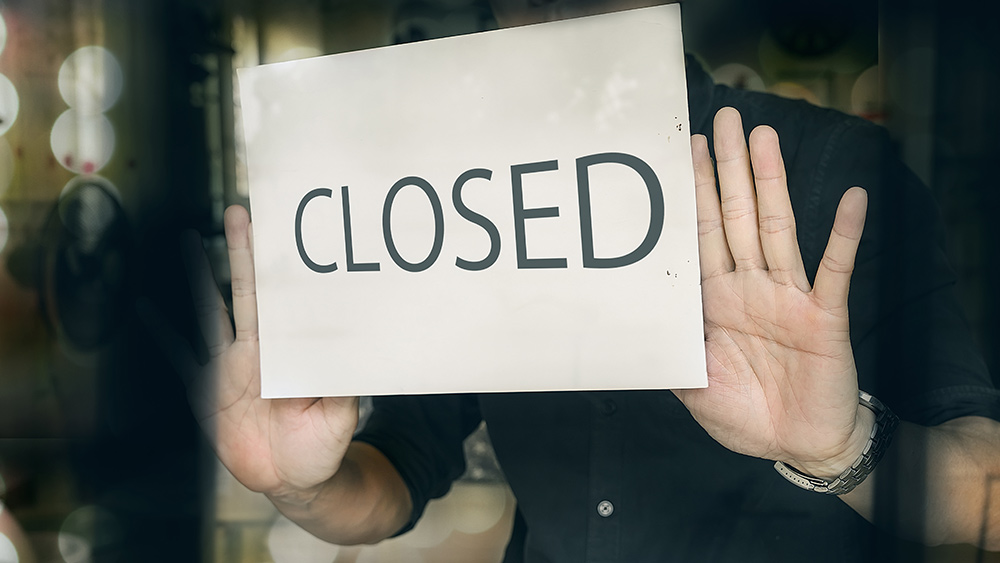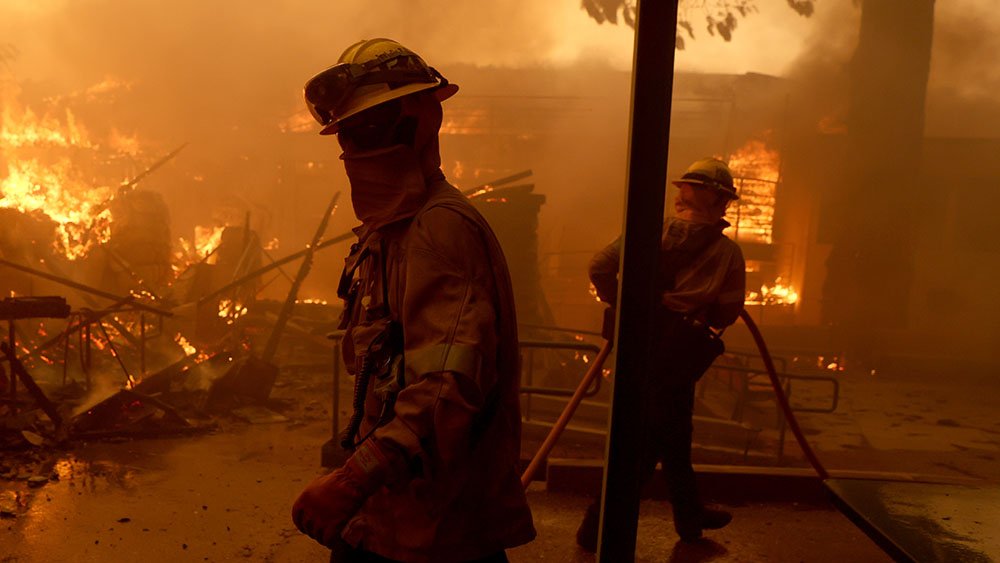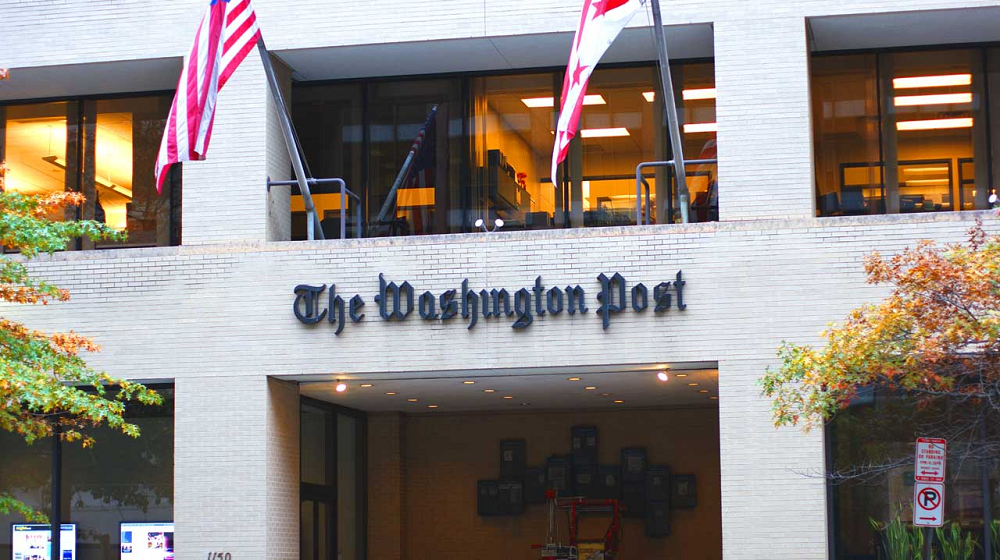Fabric and craft retailer closes six stores as it navigates post-pandemic challenges
01/11/2025 / By Laura Harris

- Fabric and craft retailer, Joann, which emerged from bankruptcy in April 2023, quietly closed six of its 815 locations in the United States.
- Joann faces continued difficulties as consumer behavior changes with the easing of pandemic restrictions, despite a successful debt restructuring that canceled $505 million in debt.
- Joann’s closures are part of a routine store location evaluation and optimization process, according to the company’s director of corporate communications, who noted that new and remodeled locations have been opened recently.
- Joann’s situation reflects a broader trend in the retail industry, with several major chains planning store closures in 2025 to streamline operations and improve profitability.
- Other retailers planning closures in 2025 include Advance Auto Parts, Best Buy, Big Lots, Denny’s, Dick’s Sporting Goods, Foot Locker, Macy’s, Party City, Walgreens and 7-Eleven.
A well-known fabric and craft retailer has quietly closed six of its 815 locations across the United States.
Joann, formerly known as Jo-Ann Stores until it rebranded in 2018 to expand its offerings beyond fabrics into a broader range of crafts, emerged from bankruptcy in April 2023 after creditors agreed to cancel $505 million in debt in exchange for ownership of the company, leaving the retailer with 815 stores in 49 states. Despite this restructuring, the company continues to face challenges as consumer behavior shifts with the easing of pandemic restrictions.
The company filed for Chapter 11 bankruptcy in March of last year, citing a decline in pandemic-era sales growth and a substantial debt load of $1.2 billion. The closures took place in Burlington, Iowa; Owings Mills, Maryland; Holyoke, Massachusetts; Ithaca, New York; Hickory, North Carolina and Williamsport, Pennsylvania.
Amanda Hayes, Joann’s director of corporate communications, told Retail Dive that the six closures are part of a routine store location evaluation and optimization process.
She added that they “also opened new and remodeled locations in recent months, including new stores in Great Falls, Montana and Maplewood, Minnesota,” emphasizing that Joann has no plans for widespread shutdowns or going out of business.
Several major chains also set to close stores in 2025
Joann’s situation is not unique in the current retail environment.
This 2025, several major chains have announced plans to close stores, from automotive parts to sporting goods, the retail landscape is witnessing a significant shake-up as companies seek to streamline operations and improve profitability. (Related: Unprecedented wave of store closures sinks U.S. retail industry.)
Advance Auto Parts, for example, is closing 523 corporate stores and exiting 204 independent locations while consolidating into 13 larger distribution centers by 2026. Best Buy plans to close 10 to 15 stores, following the closure of 24 in 2024. Big Lots, after narrowly avoiding bankruptcy, is repositioning itself by rebranding some locations to focus on non-furniture categories.
Denny’s Corporation, known for its extensive restaurant network, has also announced plans to close 150 underperforming and redundant locations by the end of 2025 to streamline its operations and focus on higher-performing stores. Similarly, Dick’s Sporting Goods is set to close 35 stores in 2025 to focus on improving profitability and realigning with market demands.
Foot Locker is planning to close over 400 locations by 2026 but will rebrand 280 to offer a more interactive shopping experience. Macy’s is increasing its store closures from 50 to 65 by the end of January 2025 to optimize its store network and align with changing consumer behaviors.
Meanwhile, Party City will close all its locations by Feb. 28, 2025. Walgreens is set to close 2,150 stores by 2027, while 7-Eleven plans to close 444 stores but invest in improving food offerings in some locations following a decline in sales.
These changes reflect companies’ efforts to optimize their operations, enhance profitability and adapt after the post-pandemic market has seen a significant shift in consumer behavior. In other words, the retail industry is witnessing a period of rapid transformation, with companies reevaluating their strategies and adapting to evolving consumer preferences and market conditions. The coming months and years will likely see further shifts in the retail landscape as companies continue to navigate these challenges.
Visit EconomicRiot.com for more stories like this.
Watch this video about the mass closures of department store chains TJMaxx and Marshalls, alongside other businesses.
This video is from the Pool Pharmacy channel on Brighteon.com.
More related stories:
Retail giant Party City mulls BANKRUPTCY again, sparking fears of mass store closures.
Walmart store closures leave local communities grappling with economic and social consequences.
Walmart cuts another 2,000 warehouse jobs following retail store closure announcement.
Walmart CEO: Rampant organized shoplifting could lead to price hikes, store closures.
Sources include:
Submit a correction >>
Tagged Under:
bankruptcy, bubble, business, collapse, debt bomb, debt collapse, downsizing, economic collapse, economic riot, finance riot, Joann, market crash, mass closures, restaurant sector, retail industry, risk, store closures, US retail
This article may contain statements that reflect the opinion of the author
RECENT NEWS & ARTICLES
COPYRIGHT © 2022 FinanceRiot.com
All content posted on this site is protected under Free Speech. FinanceRiot.com is not responsible for content written by contributing authors. The information on this site is provided for educational and entertainment purposes only. It is not intended as a substitute for professional advice of any kind. FinanceRiot.com assumes no responsibility for the use or misuse of this material. All trademarks, registered trademarks and service marks mentioned on this site are the property of their respective owners.




















